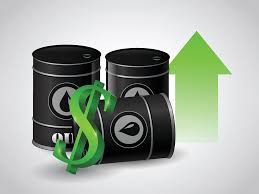
Oil prices ended higher Thursday as Hurricane Delta forced the shut-in of more than 90% of the Gulf of Mexico’s crude output and the Saudis reportedly consider postponing OPEC plans to raise output.
West Texas Intermediate crude for November delivery rose $1.24, or 3.1%, to settle at $41.19 a barrel on the New York Mercantile Exchange.
December Brent crude, the global benchmark, added $1.35, or 3.2%, at $43.34 a barrel on ICE Futures Europe.
A strike in Norway also threatened to reduce production in the North Sea according to MarketWatch.
As of Wednesday, 91.53% of Gulf oil production and 61.82% of natural-gas output were shut in as the hurricane churned in the Gulf of Mexico, according to the U.S. Bureau of Safety and Environmental Enforcement.
Meanwhile, Saudi Arabia is considering the postponement of plans for the Organization of the Petroleum Exporting Countries to raise oil production early next year to the end of the first quarter, The Wall Street Journal reported Thursday, citing comments from senior Saudi oil advisers.
They cited the rise in COVID-19 cases in many parts of the world, as well as the expected return of Libyan crude oil to the world market for rethinking the plan, the report said.
OPEC and its allies, collectively known as OPEC+, had agreed to cut overall oil output by 9.7 million barrels per day starting in May. The group tapered the cuts starting in August to 7.7 million barrels per day.
“The Saudi reluctance to raise output should solidify an oil bottom,” Phil Flynn, senior market analyst at The Price Futures Group, told MarketWatch. With uncertainty surrounding a second wave of COVID-19 cases and the success that OPEC+ has had with output cuts, and with global supply tightening, “why change course?”
Source: MarketWatch





